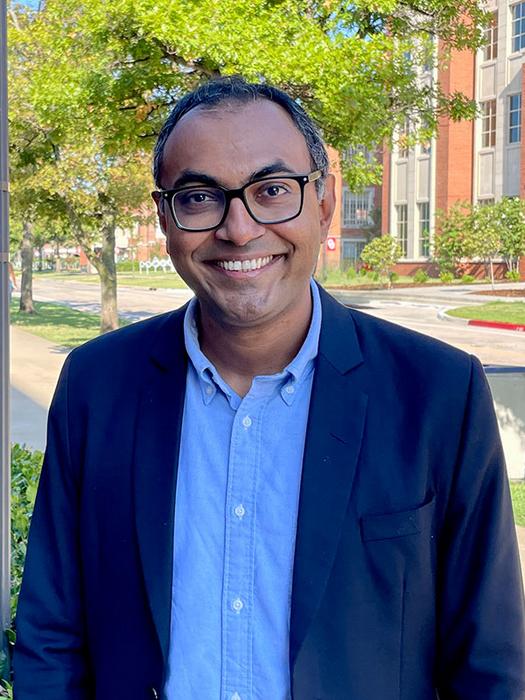Kasun Gunasooriya, Ph.D., an assistant professor in the University of Oklahoma School of Sustainable Chemical, Biological and Materials Engineering, has received a Ralph E. Powe Junior Faculty Enhancement award from the Oak Ridge Associated Universities. He was selected for his research on converting nitrate captured during the water purification process into ammonia, reducing water pollutants while generating an important fertilizer for global agriculture.

Credit: Karen Kelly
Kasun Gunasooriya, Ph.D., an assistant professor in the University of Oklahoma School of Sustainable Chemical, Biological and Materials Engineering, has received a Ralph E. Powe Junior Faculty Enhancement award from the Oak Ridge Associated Universities. He was selected for his research on converting nitrate captured during the water purification process into ammonia, reducing water pollutants while generating an important fertilizer for global agriculture.
“Every year, we produce about 180 million metric tons of ammonia using the Haber-Bosch process worldwide. This process requires high temperature and pressure and consumes about 1% of the world’s annual energy output while generating 1.3% of global carbon dioxide emissions,” said Gunasooriya.
Gunasooriya said that 80% of that ammonia is then converted to nitrogen-based fertilizers, which help produce enough food to feed half of the world’s population. Nitrates find their way into drinking water via these fertilizers. Runoff from fertilized soil enters waterways that lead to lakes and, eventually, drinking water.
“We are asking if we can take these waste nitrates and convert them back to value-added ammonia, completing the cycle. By studying the nitrate reduction reaction electrochemically, we can use renewable electricity to drive this reaction and operate at ambient conditions,” Gunasooriya said.
According to Gunasooriya, nitrates in drinking water are linked to human health complications such as infant methemoglobinemia — also known as “blue baby syndrome,” caused by low blood oxygen levels — and ovarian cancer. High nitrate levels can also cause algae blooms and mass death of aquatic life due to lower oxygen levels in water.
Gunasooriya will study single- and dual-atom alloy catalysts for electrocatalytic nitrate conversion. Single- and dual-atom alloys are metals that host one or two atoms of a different metal, such as a copper host with a single platinum atom. These alloys are a more cost-effective catalyst. Though platinum is very reactive, it is also very expensive; a single atom of platinum with copper is more reactive than copper alone while being more cost-effective than platinum.
A single atom of late transition metals like platinum, palladium, ruthenium, and rhodium also helps eliminate the rate-limiting step, which Gunasooriya compares to a check-out line at the grocery store. “I buy everything as fast as I can, but when I come to the cashier, that’s the rate-limiting step. I have to wait until the person in front of me finishes with the cashier to complete my shopping.”
When converting nitrate, the rate-limiting step is the initial bond-breaking of nitrogen and oxygen. Because nitrate is a stable molecule, it must be destabilized to break the nitrogen-oxygen bond. Late transition metals help to break this bond.
As research on cost-effective ways to remove nitrates from drinking water and convert nitrates to resources, commercialized processes can follow. Access to clean drinking water is one of the 14 grand challenges for engineering in the 21st century set by the National Academy of Engineering.
Learn more about Gunasooriya’s research.




